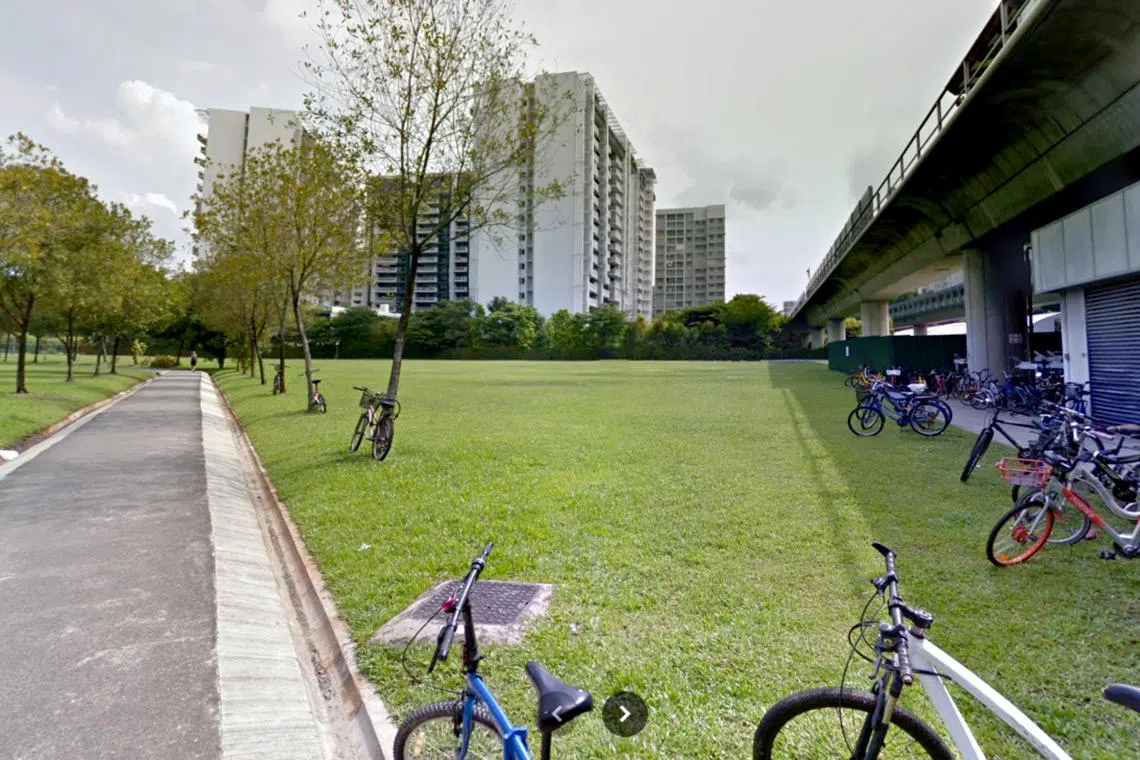News analysis
Strong bidding for Lakeside Drive site amid uncertain economic outlook seen as vote of confidence
Sign up now: Get ST's newsletters delivered to your inbox

The Lakesite Drive site drew a top bid of $608 million from two subsidiaries of City Developments.
PHOTO: SCREENGRAB FROM GOOGLE MAPS
Follow topic:
SINGAPORE - The state tender for a plot of residential land in Lakeside Drive near the Jurong Lake District closed on June 3 with six bids, in what analysts say is a vote of confidence by developers in private housing demand, especially at sites in established housing estates and near MRT stations.
The Government Land Sales (GLS) site, which is expected to offer 575 units and 1,000 sq m of commercial space, drew a top bid of $608 million from two subsidiaries of City Developments.
This translates to a land rate of $1,132 per sq ft per plot ratio.
The strong interest from developers for the Lakeside Drive plot comes after a Media Circle (Parcel B) site drew no bids on April 29 and a Lentor Gardens site drew a mere two bids on April 3.
Both these earlier tenders had led analysts to question if developers had turned cautious, given an increasingly uncertain macroeconomic outlook.
Tariff-related disruptions and turmoil have already caused the Government to revise down Singapore’s 2025 gross domestic product growth forecasts, and analysts are watching how the changing global trading environment will affect the economy and, in turn, the housing market.
The industry is waiting to see how the GLS programme – the mechanism through which the state releases land for development by the private sector – will be calibrated to deal with the projected downturn.
In previous financial crises, the GLS programme was temporarily suspended in a bid to curtail housing supply – as was the case during the 1998 and 1999 Asian financial crisis, with the exception of some sites.
The Government resumed releasing sites only from 2000 when the market showed signs of recovery, said real estate veteran Bond Lam Chern Woon.
Mr Lam, who was former head of research and consulting at Edmund Tie, pointed out that the Government took a similar approach in 2008 and 2009 during the global financial crisis.
He added that during the Covid-19 pandemic, GLS sites were launched as scheduled in 2020, but the average tender period (from tender launch to tender close) was noticeably longer compared with the pre-pandemic years.
This timeframe was about 4.5 months for GLS sites launched from 2020 to 2022, versus 2.7 months from 2017 to 2019.
“The policy intent of the extended tender periods was to grant developers more leeway to assess market conditions,” Mr Lam said.
Will the Government adopt similar measures with the GLS programme this time?
Analysts believe an outright suspension of the GLS programme is unlikely because the authorities will likely have to continue to prime sites for new homes, due to the need to supply land to meet housing demand.
Furthermore, domestic demand for new non-landed homes continues to be supported for now.
On the private property front, housing supply from the GLS programme will be raised to 8,505 units in the first half of 2025, up from 8,140 units in the second half of 2024.
PropNex chief executive Ismail Gafoor pointed out that the unsold stock of uncompleted private homes, excluding executive condominiums, is much lower now than in previous crises – so there is much less risk of the market crashing because of an oversupply.
There were 18,125 such units in the first quarter of 2025, compared with 29,149 units in the first quarter of 2020 when the pandemic struck, and around 43,000 units in 2008 during the global financial crisis, he said.
In the case of Media Circle Parcel B, while this was the second time in about a year that no bids were received for a GLS site, analysts said it could be attributed to site-specific factors including a lack of HDB upgraders and amenities near the site in the one-north precinct.
The lacklustre launch in April of the nearby Bloomsbury Residences
However, the better than expected bidding interest for the Lakeside Drive site indicates that developers may be saving their bullets for more choice sites.
These include those in new housing precincts in Bukit Timah Turf City and the former Keppel Golf Course; and Chuan Grove and a mixed-use site in Hougang Central, both of which are close to an MRT station.
Developers favour sites like Lakeside Drive for its ready pool of HDB upgraders from nearby Bukit Batok, Jurong East and Jurong West housing estates, and proximity to a substantial industrial employment zone in Boon Lay, Jurong, Pioneer and Tuas.
That said, analysts point out that healthy housing demand is contingent on there not being significant job losses and on household balance sheets remaining strong.
Mr Edwin Loo, real estate consultancy Cistri’s associate director, said: “If current events end up being a trigger for slower income growth and job creation, we can expect demand for private housing to begin to soften gradually.”
In such a scenario, he pointed out that buyers who are on the cusp of affording private property are likely to “act conservatively and opt for the HDB resale market, rather than the lower rungs of the private housing market”.
Mr Loo, a former urban planning team lead at the Urban Redevelopment Authority, also said the tariff-related economic instability would affect “project feasibility assumptions made by private residential developers, especially around potential sale prices, interest rates and development costs”.
He added that he believes the Government is likely “actively considering a range of economic scenarios” and evaluating how they would impact household incomes, household formation and demand for housing across various price points across the public and private markets.
Whether that will lead to more state land being allotted for public housing and executive condominiums would bear watching.


